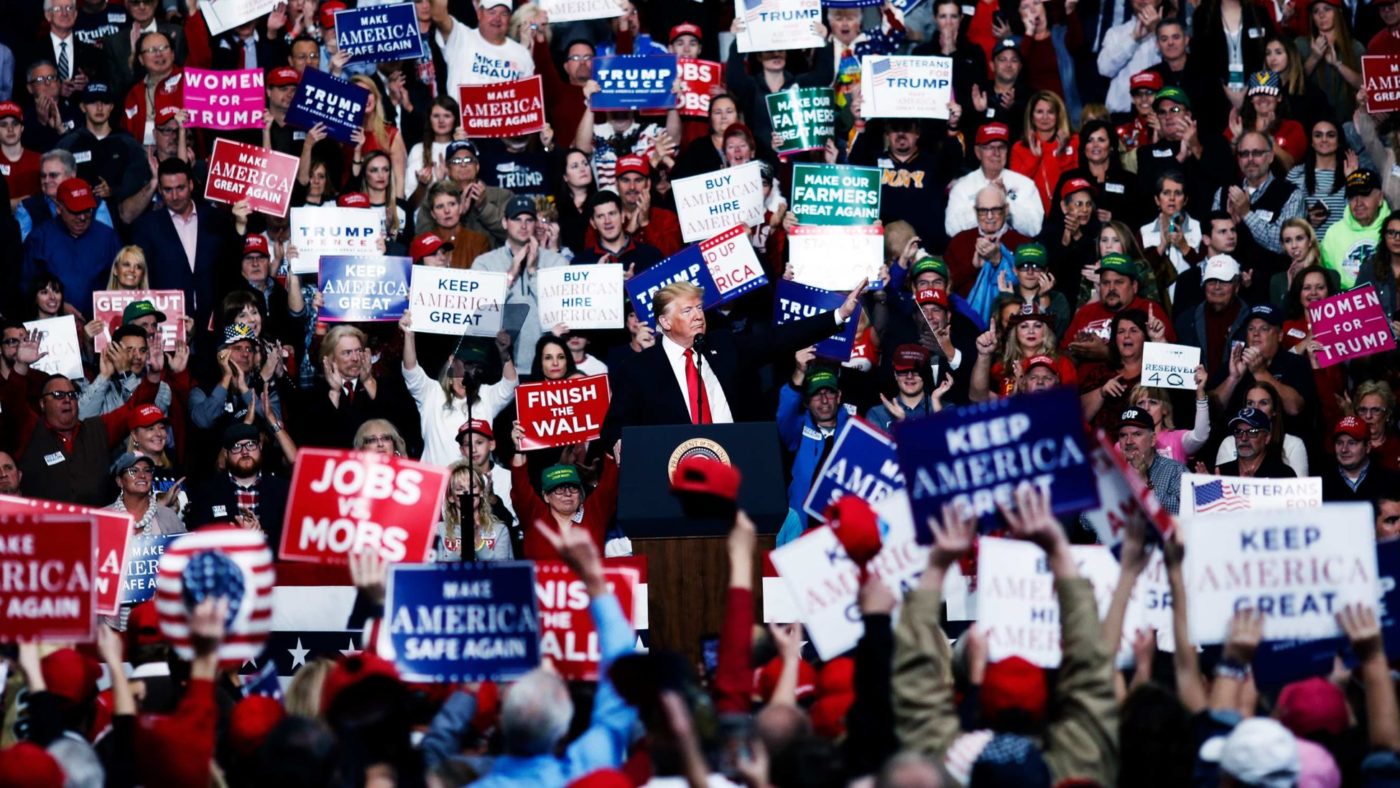At a rally on Thursday night, Donald Trump described next Tuesday’s Midterms as the “election of the caravan”.
In trying to make the thousands of Honduran migrants making their way north the campaign’s defining issue, Trump was doing what all politicians do a few days out from a major election, albeit with characteristic lack of subtlety: boosting turnout among his loyal supporters by focusing on the policy area that most energises them.
It isn’t just his melodramatic political exploitation of the caravan, underlined by the America First virtue signalling of sending more than 5,000 troops to the southern border. On Tuesday, Trump said he was mulling an executive order to end birthright citizenship. How exactly that would be constitutional was as unclear as it was, in immediate political terms, unimportant.
It has certainly been discomforting to see Trump ramp his rhetoric up, not tone it down, in the wake of the massacre at a Pittsburgh synagogue and the foiled bomb plot targeting prominent Democrats and critics of the President figures. We will find out whether his tactics have paid off on Wednesday morning.
For what it’s worth, most forecasts expect the Republicans to lose the House of Representatives but hold onto the Senate. Unless the polls are badly wrong, the outcome is likely to be well within the bounds of historic precedent.
Trump is unpopular, and deservedly so, even with the US economy going gangbusters. The first two years of his Presidency have been bad for America and bad for the world. But we are a long way from the spontaneous combustion that many were predicting after he shocked the world by beating Hillary Clinton.
At the midpoint of the presidential cycle, a second Trump term seems entirely plausible. Given the steady stream of stories revealing the incompetence, disarray and dysfunction that rules in Trump’s White House, that is an indictment of the President’s opposition.
The failure starts with a misunderstanding of the Trump phenomenon. Democrats have misread his electoral success as an incoherent expression of protest.
As Roger Eatwell and Matthew Goodwin explain in their illuminating new book, National Populism: The Revolt Against Liberal Democracy, supporters of national populist movements – be it Trump, Brexit or far-right European figures like Marine Le Pen – “are not merely protesting: they are choosing to endorse views that appeal to them.” (Matthew is next week’s guest on our podcast.) Trump’s supporters don’t just like the man, but his policies too. In fact, in many cases, they support the latter in spite of the former.
The protest theory is comforting for Trump’s opponents because it avoids the possibility that voters really do want stronger borders, to put America first and reduce immigration. As Eatwell and Goodwin put it, “Certainly, many loathe established politicians, but they are also endorsing the message – they are voting for it because they want it.”
The lesson, of course, is not that the Democrats should ape Trump. But that they should know what they are up against. Contrary to what many on the left of the Democratic party may claim, Trump voters are not socialists who just don’t know it yet, just as the Brexit vote wasn’t, as some claim, really a vote against austerity.
If the Democrats clip Trump’s wings by winning control of one part of Congress on Tuesday, it will be welcome news.
But it would be a mistake to think that this modest electoral progress means they have come up with a good response not just to Trump but the political wave he is riding.
This article is taken from CapX’s Weekly Briefing email. Sign up here.


